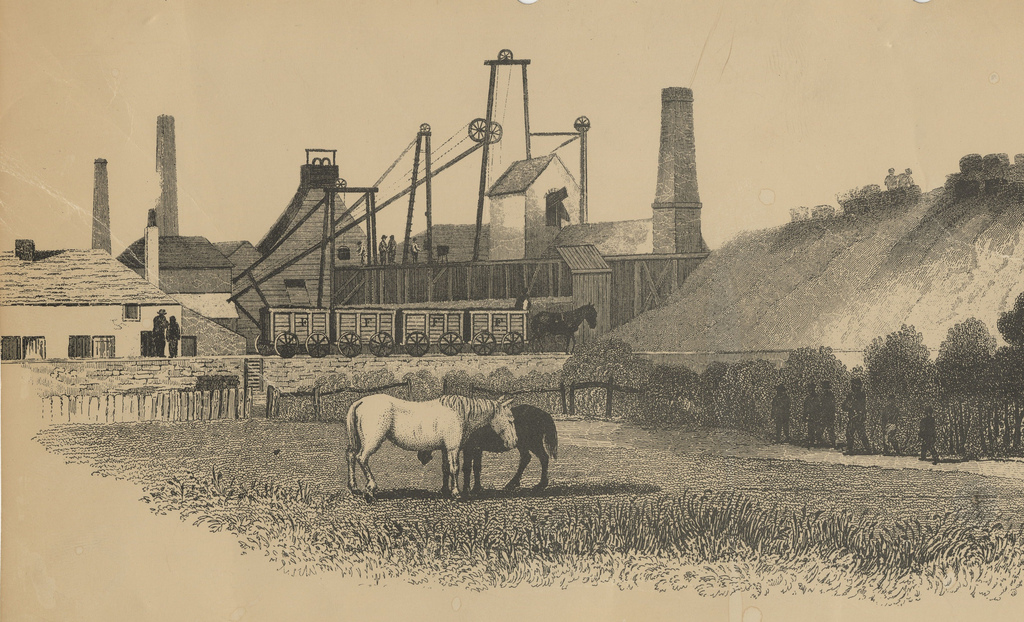|
Fawdon Wagonway
The Fawdon Wagonway was from 1818 to 1826 a long horse-drawn railway, horse-drawn and partially cable car (railway), rope-operated industrial railway in Fawdon near Newcastle upon Tyne. It was the first cable car (railway), cable car employing a moving rope that could be picked up or released by a grip on the cars. History Fawdon Colliery was set-up around 1810, and its coal was originally transported via the Kenton and Coxlodge Waggonway to Wallsend. In 1818, the Fawdon Wagonway was built by Benjamin Thompson, one of the partners owning Fawdon Colliery on a new route to transport the coal south to Scotswood. The line used inclined planes and stationary steam engines. The re-routing was the cause of controversial discussions between Thompson and the owners of the properties, over which the track ran. Benjamin Thompson installed a series of stationary steam engines along the rail track between the Kenton Bank and Hotchpudding Planes. Stationary steam engines transported the coal ... [...More Info...] [...Related Items...] OR: [Wikipedia] [Google] [Baidu] |
Thomas Harrison Hair
Thomas Harrison Hair (23 December 1808 – 11 August 1875) was a British artist most famous for depictions of industrial scenes in north-eastern England in the first half of the nineteenth century. Life T.H. Hair (as he signed his work) was born in Newcastle upon Tyne or the nearby village of Newburn on 23 December 1808, the son of John Hair, a lamp-black maker and tanner from Scotswood, Newcastle upon Tyne, and Hannah Harrison. He was baptised at All Saints' Church, Newcastle upon Tyne on 22 January 1809. Little is known of his early life but he probably trained in the workshops of Mark Lambert (1781–1855), a Tyneside engraver and lithographer. Lambert had been assistant to Thomas Bewick (1753–1828), the famous wood engraver from Cherryburn, Northumberland. Hair relocated to London in the late 1830s, and produced a body of work there, much of it referring to North East England. Three of his paintings were exhibited at the Royal Academy of Arts between 1841 and 1849, includin ... [...More Info...] [...Related Items...] OR: [Wikipedia] [Google] [Baidu] |
Wideopen
Wideopen, also occasionally spelled Wide Open, is a village in the North Tyneside metropolitan borough of Tyne and Wear, England, around north of Newcastle. Wideopen adjoins the settlements of Seaton Burn, Brunswick Village and Hazlerigg. The village straddles the historic Great North Road, formerly the A1 trunk road, but is now bypassed by a new alignment of the A1 immediately to the west. The village lies in an area with a strong mining history and had its own colliery. Weetslade Country Park, to the east of the village, is reclaimed from an extensive area of coal mining activity. In 2012 work commenced on the building of a new housing estate by Bellway homes, called Five Mile Park. It is located to the east of the Great North Road, between Lockey Park and Weetslade Country Park. The name refers to the distance from the centre of Newcastle – similarly there is a Three Mile Inn to the south, and a Six Mile Bridge to the north. History The village is present on an 186 ... [...More Info...] [...Related Items...] OR: [Wikipedia] [Google] [Baidu] |
Horse-drawn Railway
Wagonways (also spelt Waggonways), also known as horse-drawn railways and horse-drawn railroad consisted of the horses, equipment and tracks used for hauling wagons, which preceded steam-powered railways. The terms plateway, tramway, dramway, were used. The advantage of wagonways was that far bigger loads could be transported with the same power. Ancient systems The earliest evidence is of the 6 to 8.5 km long ''Diolkos'' paved trackway, which transported boats across the Isthmus of Corinth in Greece from around 600 BC. Wheeled vehicles pulled by men and animals ran in grooves in limestone, which provided the track element, preventing the wagons from leaving the intended route. The Diolkos was in use for over 650 years, until at least the 1st century AD. Paved trackways were later built in Roman Egypt. Wooden rails Such an operation was illustrated in Germany in 1556 by Georgius Agricola (image right) in his work De re metallica. This line used "Hund" carts with ... [...More Info...] [...Related Items...] OR: [Wikipedia] [Google] [Baidu] |

